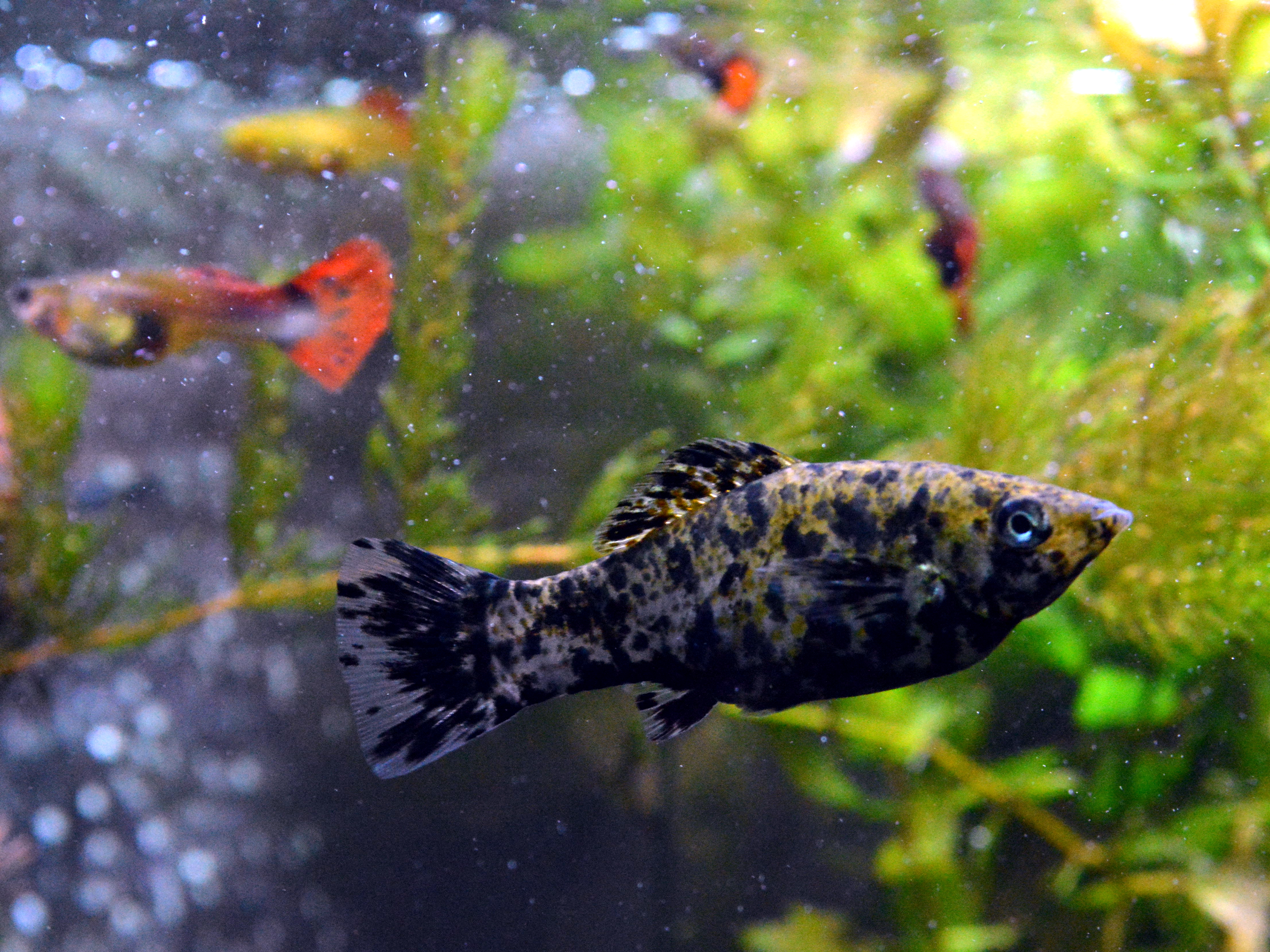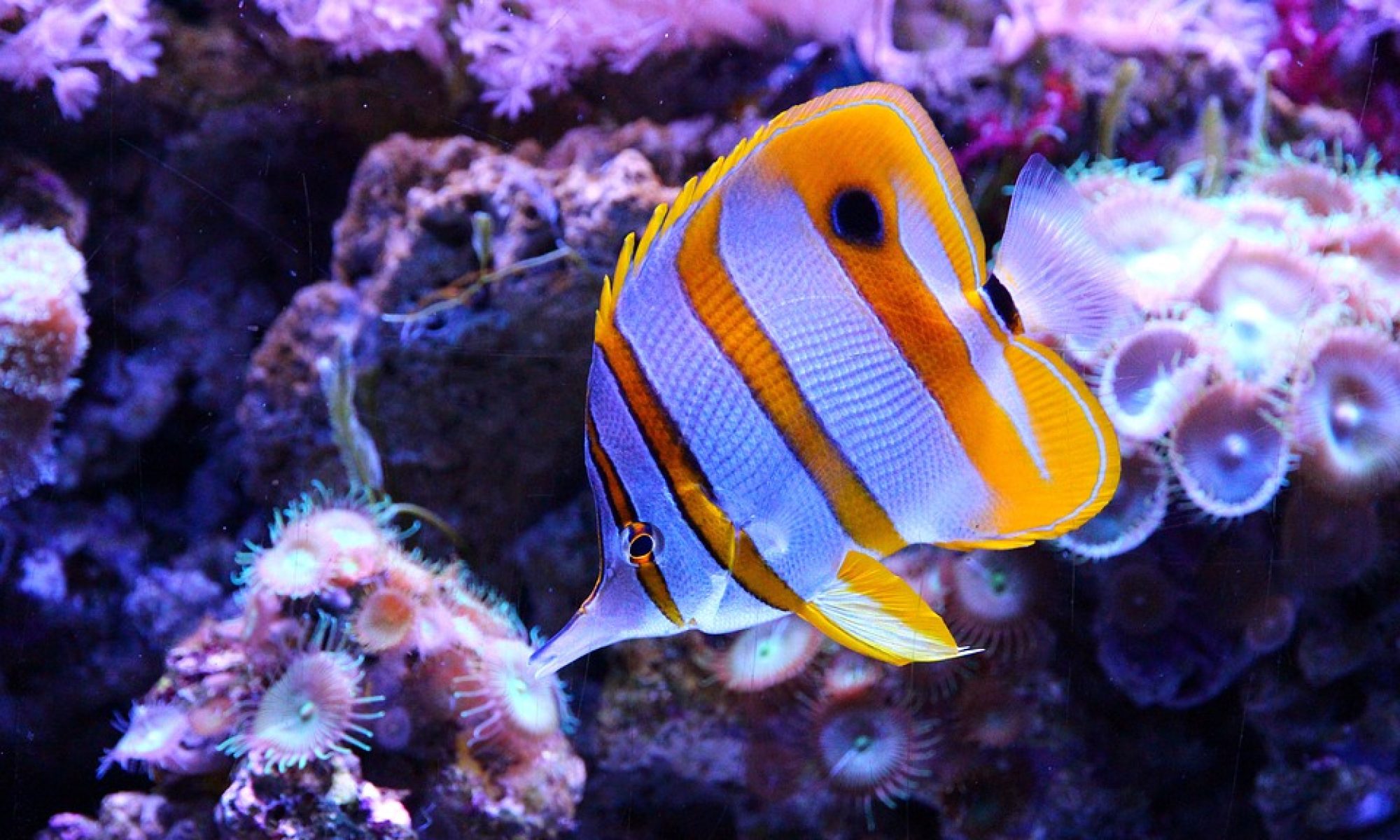Introduction To Molly Fish
Molly fish are easy to maintain and quite charming fish, they will quickly adapt to changes in tanks and are an easy livebearer to breed, their peaceful and calm personality makes them compatible with most fish.
This small table will give you an idea of what is required to maintain a Molly Fish in good condition.
| Temperature Required | 75-80 Fahrenheit or 23-26 degrees Celsius |
| pH required | 7-8pH |
| Colors Available | Primitive Colors: White, Orange and Black. Variations will come from those 3 colors. |
| Diet | Omnivores, they can be fed zucchini and bloodworms aside from pellets or flakes. |
| Lifespan | 5 years |
| Minimum Tank Size | 10 Gallons for each 4 Mollies and 3 Gallons for each extra fish. |
| Tank Set-Up | A freshwater tank that is planted.The tank will require a heater and filter with low water flow. |
| Family | Peociliidae |
| Max Size | 4.5 Inches |

Quick Review and History of Molly Fish
Molly fish have long been a part of fish keeping as they are a species found in the Americas and are easy to breed, easy to maintain and come in a wide range of beautiful colours.
Molly fish come from the Peociliidae family in which 40 species exist, 39 of them being Molly and the odd one out being the Endler’s Livebearer.
Similar to Guppies, Mollies are livebearers, which means that they carry their eggs inside of them until the fry hatch and are ready to be released into the wild or your tank, they will usually release about 100 fry.
Molly Fish are the perfect fish for beginners as they are sturdy and adapt to many different habitats. The tank requirements for Molly are very basic and easy to recreate plus Molly are such a common fish that you will be able to find them in most stores.
The common Molly can be found in a price range between 2 to 4 U.S. Dollars.
We personally think that Molly fish are an excellent fish and definitely would recommend them to fish keepers of all levels.
Bearing
Molly fish are a peaceful and calm fish but will become aggressive around big groups of fish and other aggressive or big fish. Mollies will harass, annoy and stress other females in the tank.
A Molly shoal should be predominantly female or it could cause too much stress amongst the females.
Mollies are social fish and enjoy being around other Mollies, they will swim together creating a school of Molly fish.

Appearances and Types
There are heaps of Molly fish species, most looking very similar to the common Molly, the most notable differences are colors, patterns, tail shape, and size.
The common Molly has a flat body which becomes tall near the middle but narrows towards the mouth. They usually have flat, transparent, fan-like, caudal fin.
Female Molly have an anal fin that spreads out like a fan.
Pregnant female Molly will have an incredibly large belly and will be easy to spot and differ from non pregnant females.
Females will grow up to 4.5 inches and males will only reach 3 inches.
Patterns on Molly fish will always be different, and will change every generation.
Here is a small list of Mollies that can be found in stores:
Black Molly Fish: This Molly fish shares almost all characteristics with the common Molly fish except color and patterns. These fish are all black, if you like simple colours on your fish and don’t like the flashiness of yellow or Orange Mollies These are a perfect alternative.

Sailfin Molly Fish: This fish comes in all types of colours and patterns as its one of the most commonly bred Molly, it is recognized by its dorsal fin, which is quite tall and runs from the back of the tail to the beginning of the tail, near its caudal fin. Its tail usually has a pattern.

Balloon Molly Fish: These Mollies have large bellies, and round bellies, there isn’t a specific pattern or colour to them, the biggest difference between these Molly and the common Molly is the size, these become much more tall and wide, their backs also tend to have a hunch.
Habitat + Tank Conditions
Molly will truly flourish in a planted tank with a minimum of 10 gallons of water in it.
The temperatures required are between 23 to 26 degrees Celsius or 75 to 80 degrees Fahrenheit.
The pH required is between 7 and 8 pH, not too alkaline or too acidic.
Some good plants for a freshwater tank are:
Java Moss
Parrots Feather
Egeria Densa
Vallisneria Spiralis
Molly Fish are such a sturdy fish that they are able to survive in saltwater, after all their natural habitats are in quite brackish waters. I would not recommend keeping a saltwater tank only for Mollies as there are much nicer fish that normally live in saltwater, plus there aren’t any known benefits of having these fish in saltwater or brackish water.
We would recommend a filter that doesn’t move the water too much as it can stress them out, a hanging filter or a canister filter would work best as it keeps the water flow low and are quiet.
Try to keep sand or substrate at the bottom of the tank for easier plant growing, it adds a nice look to your tank.
Normal aquarium lighting will do for Mollies, they do not require anything special. Just be sure to turn off the lights when you go to sleep and turn them on when you wake up.
Tank Mates
As Molly are calm and peaceful fish finding tank mates for your Molly shouldn’t be hard, we would recommend finding fish that are similarly sized or smaller, for example:
Tetras
Dwarf Gourami
Cherry Barbs
Corydoras Catfish
Danios
Guppies
The only Cichlid we can recommend would be the Angelfish, as it isn’t very aggressive.
Shrimps and snails will ignore most fish, but also are good tank cleaners.
Keep at least one shoal of four Mollies as they are a social fish and like to be around others of their kind. These guys will stick together and are rarely aggressive. A shoal should be predominantly female as males can be aggressive towards them.
Diet
Mollies are omnivores and in the wild they would eat algae or small invertebrates, to replicate that there is a large array of food pellets and food flakes which you could feed your fish.
As for vegetables Zucchini or broiled veggies can also be fed to your Molly, but in the protein section only bloodworms or small invertebrates would be recommended.
Weighing down your veggies with a rock or a heavy object will help your fish reach it.
Molly fish should only be fed twice a day or it could start to damage them or even kill them if not treated with care.
Breeding
Female Molly will usually choose the biggest male to mate with, so keeping large males and small females is recommended.
Mollies carry their eggs in their stomachs until they are ready to hatch and become fry, which means that they are livebearers. The eggs will develop inside the mother’s stomach, this process takes anywhere between 35 to 45 days, then the eggs will hatch inside the mother and fry start to leave the mother.
The young must be separated from the mother, using breeder boxes to keep the adult fish in and let the fry out is recommended. The adults will eat the fry at any chance given to them.
Feeding the newly born Molly is hard because their mouths are so small, but using finely cut flakes will work, once they are big enough to eat pellets they can be added to the adults tank. Here is a quick video that could help you understand what is required to breed.

